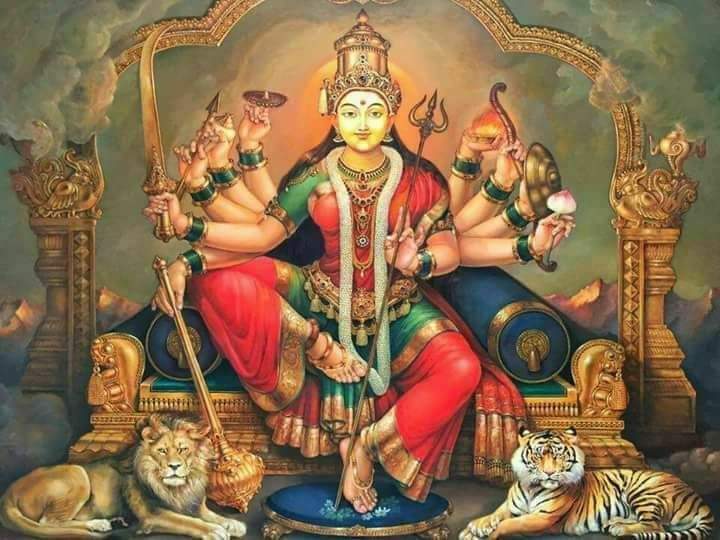
Navratre are nine days long Hindu festival. The word Navratre means nine nights. In Sanskrit Nava meaning Nine and Ratri means night. On nine nights, nine forms of Shakti are worshipped. Navaratre is the time to worship feminine forms of Divinity.
Navratre come twice a year, during the change of seasons. These are called Chaitra navratra and Sharad navratre. The nine nights are dedicated to the three goddesses – Parvati, Lakshmi, and Saraswati.
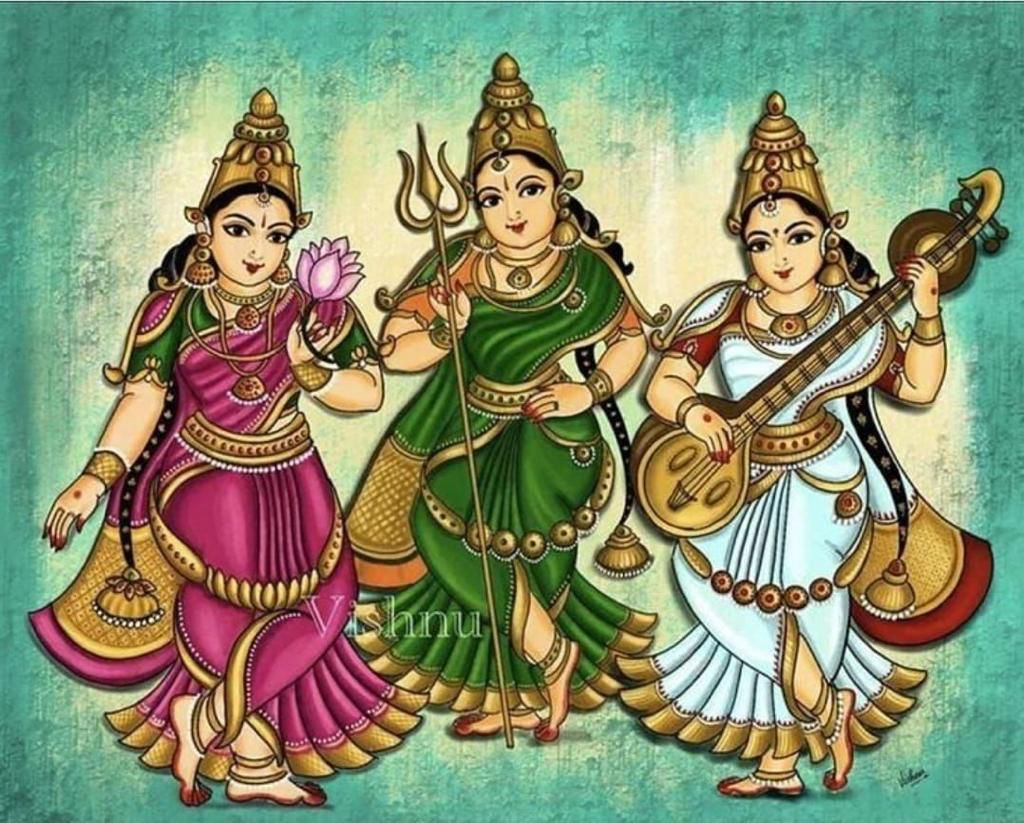
Each Devi is worshipped for three days.
The first three days of Navratri are dedicated to Devi Durga, the Goddess of strength and energy. Durga is a spiritual force also known as Kali and it destroys all our impurities.
For the next three days, people worship Lakshmi Devi who bestows wealth and prosperity.
The last three days of Navratre are devoted to Devi Saraswati, the Giver of knowledge and wisdom.
Dasahara, Durga Puja, or Vijayadashami comes on the next day i.e. tenth day. The Chaitra Navaratri culminates in Rama Navami on the ninth day and the Sharad Navaratri culminates in Durga Puja, Vijayadashami, or Dasahara.
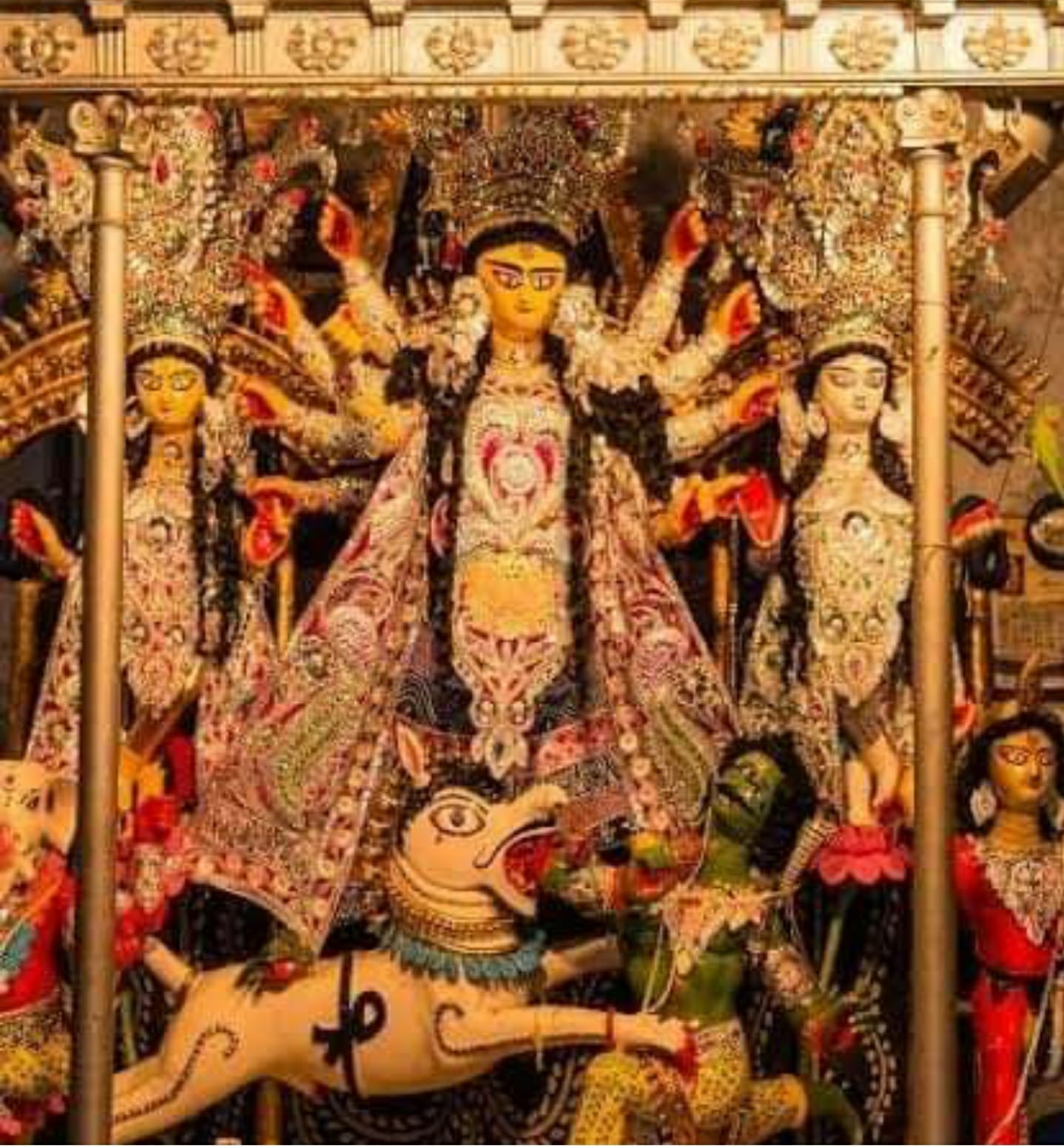
In the eastern and northeastern states of India, the Durga Puja is synonymous with Navratri. Devi Durga fights with the buffalo demon, emerges victorious, and restores Dharma.
In the northern and western states, the festival celebrates the victory of Bhagwan Ram over the demon king Ravan.
In southern states, the victory of many Devis, Ram, and Saraswati is celebrated. In all cases, the common theme is the victory of good over evil.
In Nepal, Navaratri is called Dasain and is a major annual celebration to strengthen the bonds between family members and the community.
Many people do Ayudh pooja during Navratre. Ayudh pooja is the worship of tools, equipments, instruments, weapons, etc.

The festival of Navratri spreads a feeling of happiness and jubilion among the people. People from all across the country, especially in Gujarat perform Garba in the mandirs.
Celebrations include decorations, recital of the legend, enacting of the story, and chanting of the scriptures and mantras.
On Vijayadashami or Dasahara, Devi/Devta murtis are immersed in rivers and the evil structures are burnt with fireworks marking evil's destruction.
A notable South Indian tradition is decorating miniature figurines or dolls. These include Devi, Devta, animals, birds, and rural life all in a miniature design. These are called Golu, Bommala, Bommai, or Bombe Hebba. People set up their creative themes in their homes, called Kolu. Friends and families invite each other to view Kolu displays and exchange gifts and sweets. In the evening of "Vijayadasami", any one doll from the "Kolu" is symbolically put to sleep and the Kalasa is moved a bit towards North to mark the end of that year's Navaratri Kolu. The family offers prayers and wraps up the display.
The festival also marks the start of Ram's journey back to Ayodhya and the celebration of Deepawali. The festival of light is celebrated twenty days after the Vijayadashami.
Fasting is done to cleanse the body and bring the mind and emotions/thoughts under control. When the body is cleansed by fasting, the mind is purified and one develops clarity to attain emotional peace.Fasting increases the quality of sattva and hence it facilitates movement towards the inner. Spiritual seekers observe fasting during this period to engage the energy of the Prakriti movements towards sattva. Fasting could be strictly water-only or one meal each day fast.
Ayurved recommends fasting to reignite the digestive fire and cleanse the body thereby reclaiming health. The benefits of intermittent fasting are manifold and are being discovered and validated by scientific research.
Sharad navratre heralds the beginning of the sharad ritu. It begins with the month of Ashwin. The Pandits have called sharad ritu the mother of diseases or door of death: Rogaanaam Shardi Maata.
A popular blessing among Indian traditions is Shatam Jeev Sharadaha. It means may you see hundred Sharad seasons. It implies that may you be that healthy to defy hundreds of the deadly seasons.
Pranav Shastri Ji speaking on Navratre
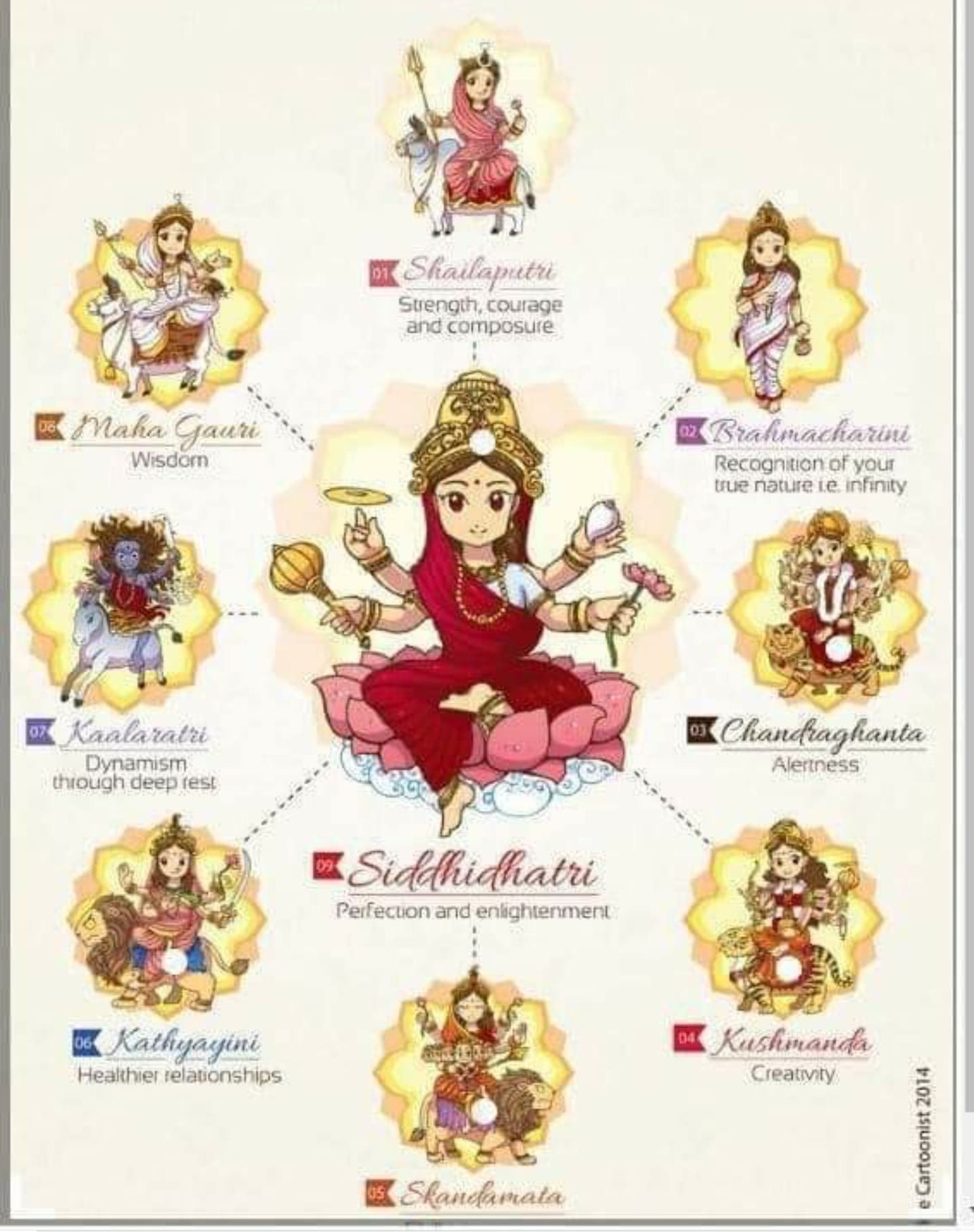
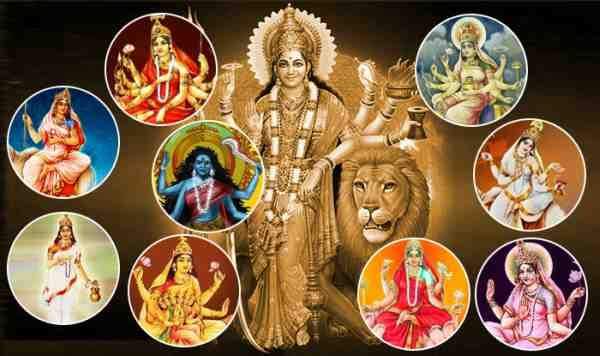
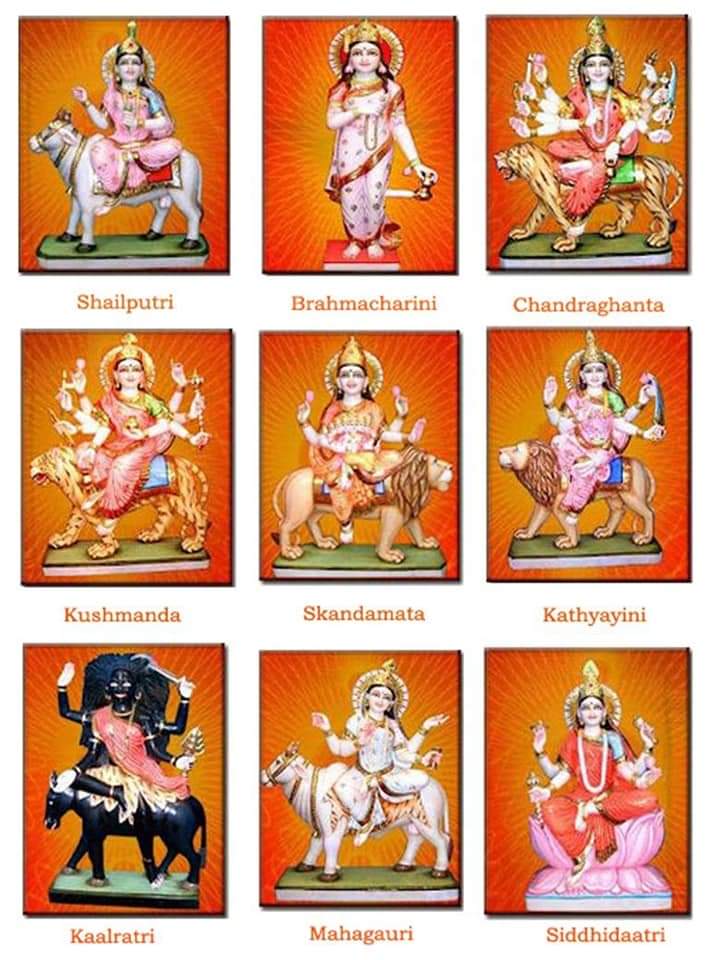
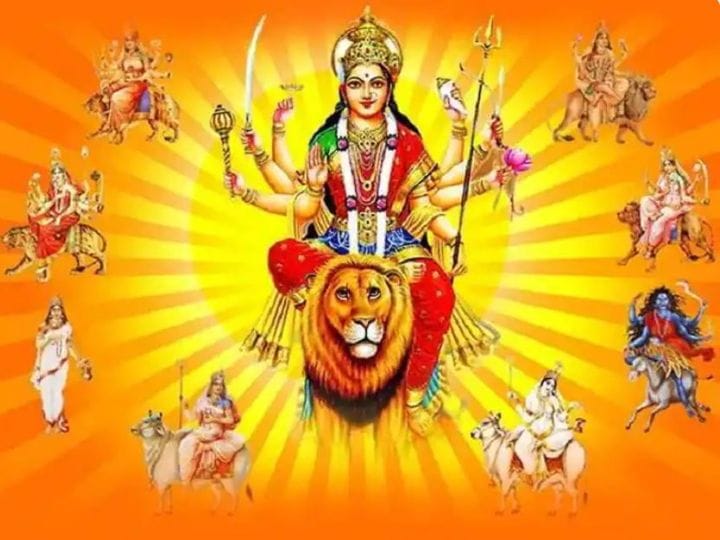
The nine forms of Durga are called Navdurga or Naudurga. These are Shailaputri, Brahmacharini, Chandraghanta, Kushmanda, Skandamata, Katyayani, Kalaratri, Mahagauri, and Siddhidatri.
Day1:Shailaputri (śailaputrī, शैलपुत्री)
Shailputri means daughter of Himalaya mountain. She purifies the mountains.
Known as Pratipada, this day is associated with Shailaputri, an incarnation of Parvati. It is in this form that the Devi is worshiped as the consort of Shiva. She is depicted as riding the bull, Nandi, with a trishul in her right hand and lotus in her left. Shailaputri is considered to be the direct incarnation of Mahakali. The color of the day is red, which depicts action and vigor.
Mantra is-
ॐ ह्रीम श्री शैलपुत्री दुर्गायै नमः |
ॐ देवी शैलपुत्र्यै स्वः |
वन्दे वंचित लाभाय, चंद्रार्धकृतशेखराम |
वर्षारूधाम शूलधरां शैलपुत्रीम यशस्विनीम ||
Day 2: Brahmcharini (brahmacāriṇī, ब्रह्मचारिणी):
On Dwitiya, Goddess Brahmcharini, another incarnation of Parvati, is worshiped. In this form, Parvati became Sati, her unmarried self. Brahmcharini is worshiped for emancipation or moksha and endowment of peace and prosperity. Depicted as walking bare feet and holding a japamala and kamandalu in her hands, she symbolizes bliss and calm. The color of the day is Royal Blue which depicts calmness-wisdom-energy.
This name comes from the word Brahman and means the one whose nature is to be engaged in brahman and tapas.
ॐ ह्रीम श्री ब्रह्मचारिणी दुर्गायै नमः |
ॐ देवी ब्रह्मचारिण्यै नमः |
दधाना कर पद्माभ्यामक्षमाला कमंडलू |
देवी प्रसीदतु मई ब्रह्मचारिण्यनुत्तमा ||
Day 3: Chandraghanta, candraghaṇṭā, चन्द्रघण्टा:
Tritiya commemorates the worship of Chandraghanta - the name derived from the fact that after marrying Shiva, Parvati adorned her forehead with half-chandra. Chandra means moon and Ghanta means bell. She is the embodiment of beauty and is also symbolic of bravery, and hence, the color of the day is yellow.
ॐ ह्रीम श्री चंद्र घंटे दुर्गायै नमः |
ॐ देवी चंद्रघंटयई नमः |
पिंडज प्रव्रुद्ध चण्डकोपास्त्रकैर्युता |
प्रसादं तनुते माध्यम चन्द्रघण्टेति विश्रुता ||
Day 4: Kushmunda kūṣmāṇḍā, कूष्माण्डा :
Goddess Kushmunda is worshiped on Chaturthi. Believed to be the creative power of universe, Kushmunda is associated to the endowment of vegetation on earth and hence, the color of the day is Green. She is depicted as having eight arms and sits on a Tiger .
Ku means little, usma means heat, and anda means egg.
ॐ ह्रीम श्री कुष्मांडा दुर्गायै नमः |
ॐ देवी कुष्मांडायई नमः |
सुरासंपूर्ण कलशं रुधिराप्लुतमेव च |
दधाना हस्तपद्माभ्यां कुष्मांडा शुभदास्तु में ||
Day 5: Skandmata skandamātā, स्कन्दमाता :
The Devi worshiped on Panchami, is the mother of Skand(or Kartikeya). The color grey is symbolic of the transforming strength of a mother when her child is confronted with danger. She is depicted riding a ferocious lion, having four arms, and holding her baby.
‘Skanda’ is a famous name of Kartikeya, son of Shiva and also other name of Sanatkumar.
ॐ ह्रीम श्री स्कन्द माता दुर्गायै नमः|
ॐ देवी स्कन्दमातायई नमः |
सिंहासङ्गताम नित्यं पद्मांचित करद्वया |
शुभदास्तु सदा देवी स्कन्दमाता यशस्विनी ||
Day 6: Katyayani, Kātyāyanī, कात्यायनी :
Born to a sage, Katya, she is an incarnation of Durga and is shown to exhibit courage which is symbolized by the color Orange. Known as the warrior goddess, she is considered one of the most violent forms of Goddess Parvati. In this avatar, the Devi rides a lion and has four hands.
Katyayani manifested in the ashram of Katyayana for the Devtas.
Ka means Brahman and atayani means the one who goes beyond. Katyani is the one who goes beyong the Brahman.
ॐ ह्रीम श्री कात्यायनी दुर्गायै नमः |
ॐ देवी कात्यायन्यायि नमः |
चंद्रहासोज्ज्वल करा शार्दूलवरवाहना |
कात्यायनी शुभम दद्याद देवी दानवघातिनी ||
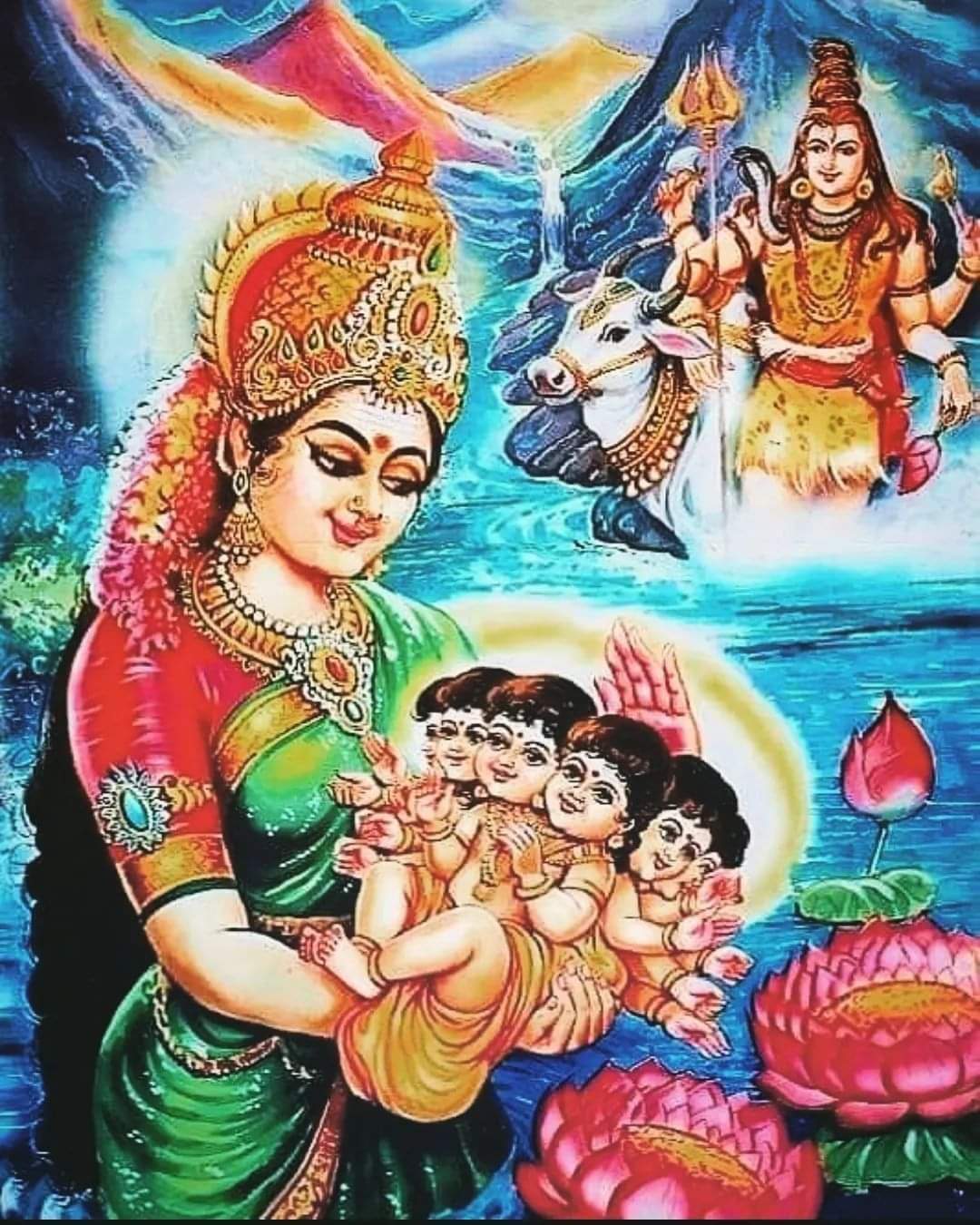
Day 7: Kalratri Kālarātri, कालरात्रि :
Considered the most ferocious form of Goddess Durga, Kalaratri is revered on Saptmi. It is believed that Parvati removed her fair skin to kill the demons Sumbh and Nisumbh. The color of the day is white. Her skin turns black.
Kaal is time or death and ratri is night. Kalratri means the night of destruction.
The word ‘kalaratri’ also means the night of Deepawalli. It falls on a new moon night and here the word means the dark night.
ॐ ह्रीम श्री काल रात्रि दुर्गायै नमः |
ॐ देवी कालरात्र्यायी नमः|
एकवेणी जपाकर्णपूरा नग्न खरास्थिता |
लम्बोष्ठी कार्णिक करनी तैलाभ्यक्तशरीरिणी ||
वाम पादोल्लसल्लोहलता कान्ताक्भुषणा |
बर्धन मूर्धामे ध्वजा कृश्णा कालरात्रिर्भयंकरी ||
Day 8: Mahagauri mahāgaurī, महागौरी :
Mahagauri symbolizes intelligence and peace. The color associated to this day is Pink which depicts optimism.
Maha means great or large and Gauri means vaani or the color white or yellow. Gauri is other name of Parvati.
ॐ ह्रीम श्री महा गौरी दुर्गायै नमः |
ॐ देवी महागौरयाई नमः |
श्वेते वृषेसमारूढा श्वेताम्बरधरा शुचिह |
महागौरी शुभम दद्यान्महादेव प्रमोददा ||
स्राव मंगल मांगल्ये शिवे सर्वार्थ साधिके शरण्ये त्र्यम्बके गौरी नारायणी नमोस्थुते ||
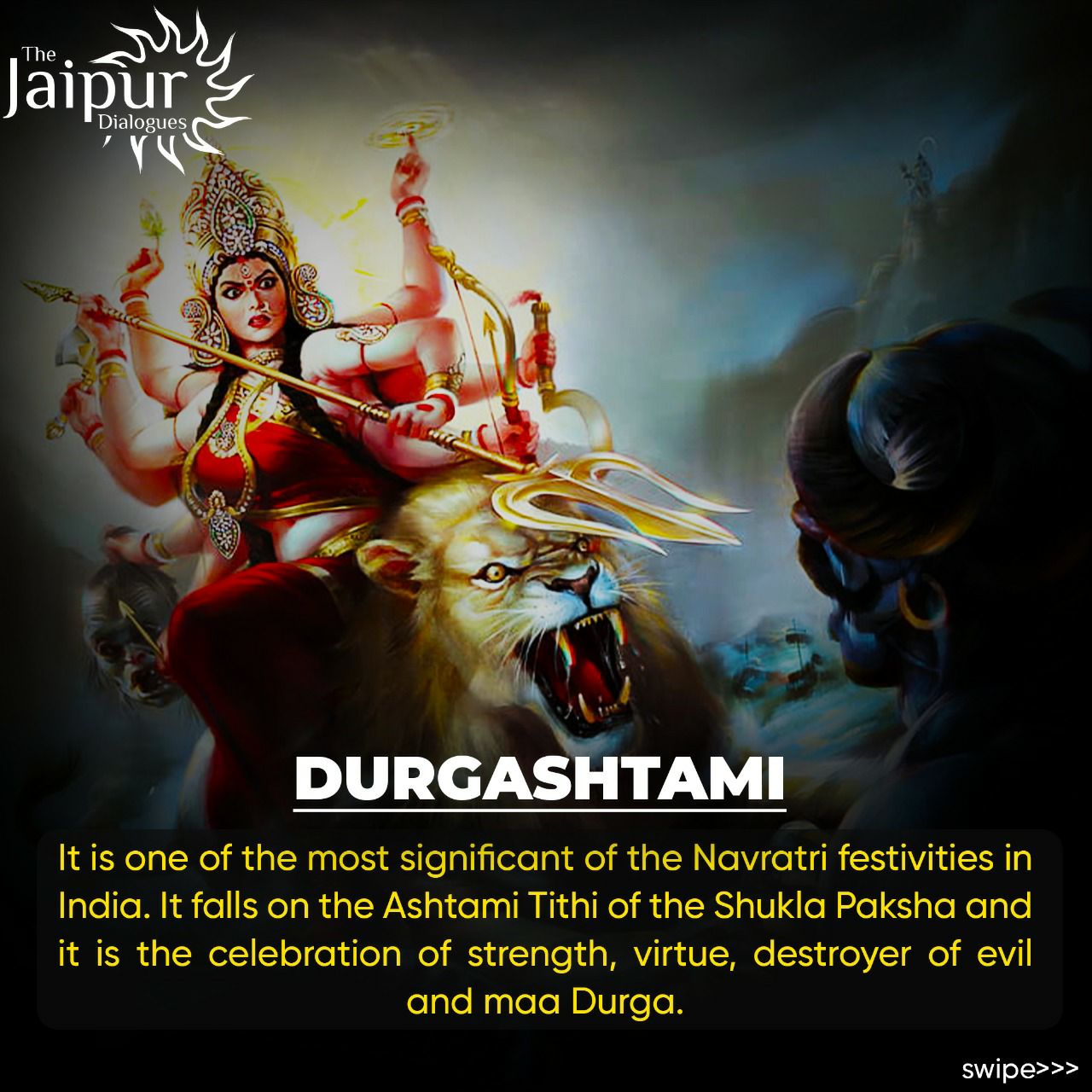
Day 9: Sidhidatri siddhidātrī/siddhidā, सिद्धिदात्री/सिद्धिदा : Worshipped on the last day of the festival also known as Navami, people pray to Siddhidaatri(Ardanareeswara). Sitting on a lotus, she is believed to possess and bestows all type of Siddhis. Here she has four hands and is also known as Saraswati Devi.

The word siddhi refers to the eight siddhis -anima, mahima, garima, laghima, prapti, prakamya, ishitva, and vashitva. Datri means giver.
ओम देवी सिद्धिदात्रीयै नमः"
सिद्ध गन्धर्व यक्षसिद्धिरसुरमरायर्पि |
सेव्यमना सदा भूयात सिद्धिदा सिद्धिदायिनी ||
यं देवी सर्वभूतेषु माँ सिद्धिदात्री रूपेण संस्थिता |
नमस्तस्ये नमस्तस्ये नमस्तस्ये नमो नमः ||
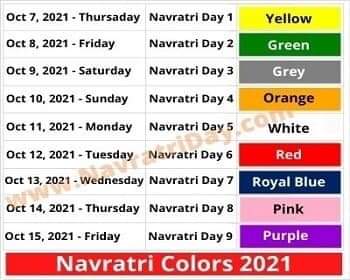
या देवी सर्वभूतेषु विष्णुमायेति शब्दिता।
नमस्तस्यै॥ नमस्तस्यै॥ नमस्तस्यै नमो नमः॥
या देवी सर्वभूतेषु चेतनेत्यभिधीयते।
नमस्तस्यै॥ नमस्तस्यै॥ नमस्तस्यै नमो नमः॥
या देवी सर्वभूतेषु बुद्धिरूपेण संस्थिता।
नमस्तस्यै॥ नमस्तस्यै॥ नमस्तस्यै नमो नमः॥
या देवी सर्वभूतेषु निद्रारूपेण संस्थिता।
नमस्तस्यै॥ नमस्तस्यै॥ नमस्तस्यै नमो नमः॥
या देवी सर्वभूतेषु क्षुधारूपेण संस्थिता।
नमस्तस्यै॥ नमस्तस्यै॥ नमस्तस्यै नमो नमः॥
या देवी सर्वभूतेषुच्छायारूपेण संस्थिता।
नमस्तस्यै॥ नमस्तस्यै॥ नमस्तस्यै नमो नमः॥
या देवी सर्वभूतेषु शक्तिरूपेण संस्थिता।
नमस्तस्यै॥ नमस्तस्यै॥ नमस्तस्यै नमो नमः॥
या देवी सर्वभूतेषु तृष्णारूपेण संस्थिता।
नमस्तस्यै॥ नमस्तस्यै॥ नमस्तस्यै नमो नमः॥
या देवी सर्वभूतेषु क्षान्तिरूपेण संस्थिता।
नमस्तस्यै॥ नमस्तस्यै॥ नमस्तस्यै नमो नमः॥
या देवी सर्वभूतेषु जातिरूपेण संस्थिता।
नमस्तस्यै॥ नमस्तस्यै॥ नमस्तस्यै नमो नमः॥
या देवी सर्वभूतेषु लज्जारूपेण संस्थिता।
नमस्तस्यै॥ नमस्तस्यै॥ नमस्तस्यै नमो नमः॥
या देवी सर्वभूतेषु शान्तिरूपेण संस्थिता।
नमस्तस्यै॥ नमस्तस्यै॥ नमस्तस्यै नमो नमः॥
या देवी सर्वभूतेषु श्रद्धारूपेण संस्थिता।
नमस्तस्यै॥ नमस्तस्यै॥ नमस्तस्यै नमो नमः॥
या देवी सर्वभूतेषु कान्तिरूपेण संस्थिता।
नमस्तस्यै॥ नमस्तस्यै॥ नमस्तस्यै नमो नमः॥
या देवी सर्वभूतेषु लक्ष्मीरूपेण संस्थिता।
नमस्तस्यै॥ नमस्तस्यै॥ नमस्तस्यै नमो नमः॥
या देवी सर्वभूतेषु वृत्तिरूपेण संस्थिता।
नमस्तस्यै॥ नमस्तस्यै॥ नमस्तस्यै नमो नमः॥
या देवी सर्वभूतेषु स्मृतिरूपेण संस्थिता।
नमस्तस्यै॥ नमस्तस्यै॥ नमस्तस्यै नमो नमः॥
या देवी सर्वभूतेषु दयारूपेण संस्थिता।
नमस्तस्यै॥ नमस्तस्यै॥ नमस्तस्यै नमो नमः॥
या देवी सर्वभूतेषु तुष्टिरूपेण संस्थिता।
नमस्तस्यै॥ नमस्तस्यै॥ नमस्तस्यै नमो नमः॥
या देवी सर्वभूतेषु मातृरूपेण संस्थिता।
नमस्तस्यै॥ नमस्तस्यै॥ नमस्तस्यै नमो नमः॥
या देवी सर्वभूतेषु भ्रान्तिरूपेण संस्थिता।
नमस्तस्यै॥ नमस्तस्यै॥ नमस्तस्यै नमो नमः॥
इन्द्रियाणामधिष्ठात्री भूतानां चाखिलेषु या।
भूतेषु सततं तस्यै व्याप्तिदेव्यै नमो नमः॥
चितिरूपेण या कृत्स्नमेतद्व्याप्य स्थिता जगत्।
नमस्तस्यै॥ नमस्तस्यै॥ नमस्तस्यै नमो नमः॥
या देवी सरवभूतेषू मातृरूपेण संस्थिता ।
नमस्तेसयै नमस्तेसयै नमस्तेसयै नमो नम ।
अपराजितदेवस्तुतिः
(देवीमाहात्म्यप्रेरिता नित्यानन्दमिश्रकृता स्तुतिः)
यो देवः सर्वभूतेषु लक्ष्मीमाय इति स्मृतः।
नमस्तस्मै नमस्तस्मै नमस्तस्मै नमो नमः॥
यो देवः सर्वभूतेषु चैत्य इत्यभिधीयते।
नमस्तस्मै नमस्तस्मै नमस्तस्मै नमो नमः॥
यो देवः सर्वभूतेषु बोधरूपेण संस्थितः।
नमस्तस्मै नमस्तस्मै नमस्तस्मै नमो नमः॥
यो देवः सर्वभूतेषु स्वापरूपेण संस्थितः।
नमस्तस्मै नमस्तस्मै नमस्तस्मै नमो नमः॥
यो देवः सर्वभूतेषु क्षोधरूपेण संस्थितः।
नमस्तस्मै नमस्तस्मै नमस्तस्मै नमो नमः॥
यो देवः सर्वभूतेषु बिम्बरूपेण संस्थितः।
नमस्तस्मै नमस्तस्मै नमस्तस्मै नमो नमः॥
यो देवः सर्वभूतेषु शाकरूपेण संस्थितः।
नमस्तस्मै नमस्तस्मै नमस्तस्मै नमो नमः॥
यो देवः सर्वभूतेषु तर्षरूपेण संस्थितः।
नमस्तस्मै नमस्तस्मै नमस्तस्मै नमो नमः॥
यो देवः सर्वभूतेषु क्षमरूपेण संस्थितः।
नमस्तस्मै नमस्तस्मै नमस्तस्मै नमो नमः॥
यो देवः सर्वभूतेषु जानरूपेण संस्थितः।
नमस्तस्मै नमस्तस्मै नमस्तस्मै नमो नमः॥
यो देवः सर्वभूतेषु लाजरूपेण संस्थितः।
नमस्तस्मै नमस्तस्मै नमस्तस्मै नमो नमः॥
यो देवः सर्वभूतेषु शमरूपेण संस्थितः।
नमस्तस्मै नमस्तस्मै नमस्तस्मै नमो नमः॥
यो देवः सर्वभूतेषु श्रद्धरूपेण संस्थितः।
नमस्तस्मै नमस्तस्मै नमस्तस्मै नमो नमः॥
यो देवः सर्वभूतेषु कामरूपेण संस्थितः।
नमस्तस्मै नमस्तस्मै नमस्तस्मै नमो नमः॥
यो देवः सर्वभूतेषु विष्णुरूपेण संस्थितः।
नमस्तस्मै नमस्तस्मै नमस्तस्मै नमो नमः॥
यो देवः सर्वभूतेषु वर्तरूपेण संस्थितः।
नमस्तस्मै नमस्तस्मै नमस्तस्मै नमो नमः॥
यो देवः सर्वभूतेषु स्मररूपेण संस्थितः।
नमस्तस्मै नमस्तस्मै नमस्तस्मै नमो नमः॥
यो देवः सर्वभूतेषु दयरूपेण संस्थितः।
नमस्तस्मै नमस्तस्मै नमस्तस्मै नमो नमः॥
यो देवः सर्वभूतेषु तोषरूपेण संस्थितः।
नमस्तस्मै नमस्तस्मै नमस्तस्मै नमो नमः॥
यो देवः सर्वभूतेषु पितृरूपेण संस्थितः।
नमस्तस्मै नमस्तस्मै नमस्तस्मै नमो नमः॥
यो देवः सर्वभूतेषु भ्रमरूपेण संस्थितः।
नमस्तस्मै नमस्तस्मै नमस्तस्मै नमो नमः॥
इन्द्रियाणामधिष्ठाता भूतानां चाखिलेषु यः।
भूतेषु सततं तस्मै व्याप्तिदेवाय मे नमः॥
चैत्यरूपेण यः कृत्स्नमेतद्व्याप्य स्थितो जगत्।
नमस्तस्मै नमस्तस्मै नमस्तस्मै नमो नमः॥
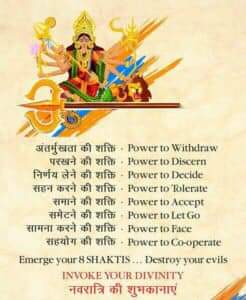
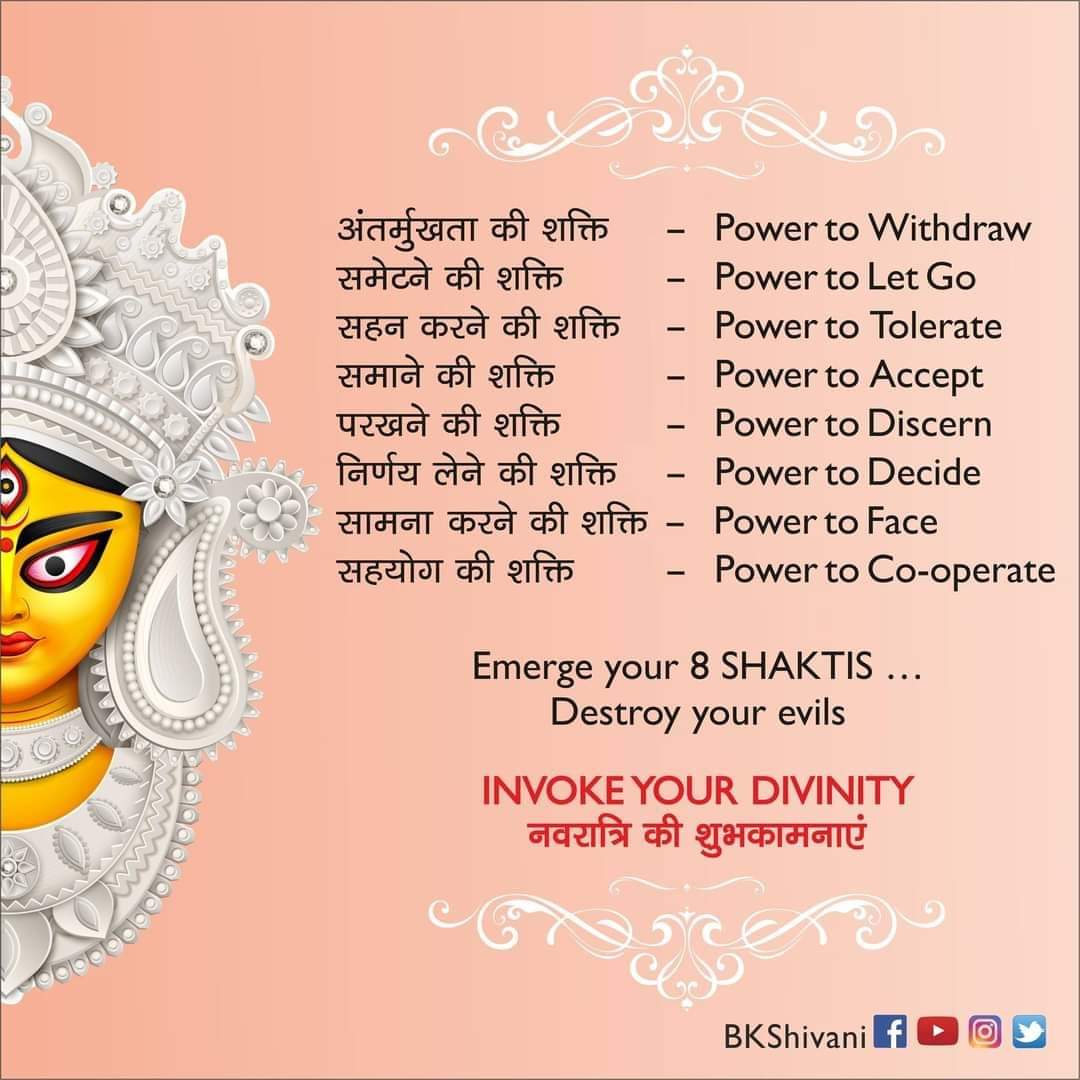
108 names of Durga:
- Sati-- One who got burned alive
- Saadhvi -The Sanguine
- Bhavaprita- One who is loved by the universe
- Bhavaani- The abode of the universe
- Bhavamochani- The absolver of the universe
- Aarya- Goddess
- Durga- The Invincible
- Jaya- The Victorious
- Aadya- The Initial reality
- Trinetra- One who has three-eyes
- Shooldharini- One who holds a monodent
- Pinaakadharini- One who holds the trident of Shiva
- Chitra- The Picturesque
- Chandaghanta- One who has mighty bells
- Mahatapa- With severe penance
- Manah- Mind
- Buddhi- Intelligence
- Ahankaara- One with Pride
- Chittarupa- One who is in thought-state
- Chita- Death-bed
- Chiti- The thinking mind
- Sarvamantramayi- One who possess all the instruments of thought
- Satta- One who is above all
- Satyanandasvarupini- Form of Eternal bliss
- Ananta- One who is Infinite or beyond measure
- Bhaavini- The Beautiful Woman
- Bhaavya- Represents Future
- Bhavya- With Magnificence
- Abhavya- Improper or fear-causing
- Sadagati- Always in motion, bestowing Moksha (salvation)
- Shaambhavi- Consort of Shambhu
- Devamata- Mother Goddess
- Chinta- Tension
- Ratnapriya- Adorned or loved by jewels
- Sarvavidya- Knowledgeable
- Dakshakanya- Daughter of Daksha
- Dakshayaj- avinaashini - Interrupter of the sacrifice of Daksha
- Aparna- One who doesnt eat even leaves while fasting
- Anekavarna- One who has many complexions
- Paatala- Red in color
- Paatalavati- Wearing red-color attire
- Pattaambaraparidhaana- Wearing a dress made of leather
- Kalamanjiiraranjini- Wearing a musical anklet
- Ameyaa- One who is beyond measure
- Vikrama- Violent
- Krrooraa- Brutal (on demons)
- Sundari -The Gorgeous
- Sursundari- Extremely Beautiful
- Vandurga- Goddess of forest
- Maatangi- Goddess of Matanga
- Matangamunipujita- Worshipped by Sage Matanga
- Braahmi- Power of God Brahma
- Maaheshvari- Power of Lord Mahesha (Shiva)
- Aeindri -Power of God Indra
- Kaumaari- The adolescent
- Vaishnavi- The invincible
- Chaamunda- Slayer of Chanda and Munda(demons)
- Vaarahi -One who rides on Varaah
- Lakshmi- Goddess of Wealth
- Purushaakriti- One who takes the form of a man
- Vimalauttkarshini- One who provides joy
- Gyaana- Full of Knowledge
- Kriya Nitya- The eternal one
- Buddhida- The bestower of wisdom
- Bahula- One who is in various forms
- Bahulaprema- One who is loved by all
- Sarvavahanavahana- One who rides all vehicles
- NishumbhaShumbhaHanani- Slayer of the demon-brothers Shumbha Nishumbha
- MahishasuraMardini- Slayer of the bull-demon Mahishaasura
- MadhuKaitabhaHantri- Slayer of the demon-duo Madhu and Kaitabha
- ChandaMundaVinashini- Destroyer of the ferocious asuras Chanda and Munda
- Sarvasuravinasha- Destroyer of all demons
- Sarvadaanavaghaatini- Possessing the power to kill all the demons
- Sarvashaastramayi- One who is deft in all theories
- Satya- The truth
- Sarvaastradhaarini- Possessor of all the missile weapons
- Anekashastrahasta- Possessor of many hand weapons
- AnekastraDhaarini- Possessor of many missile weapons
- Komaari -The beautiful adolescent
- Ekakanya- The girl child
- Kaishori- The adolescent
- Yuvati- The Woman
- Yati- Ascetic, one who renounces the world
- Apraudha- One who never gets old
- Praudha- One who is old
- Praudha- One who is old
- Vriddhamaata- The old mother (loosely)
- Balaprada- The bestower of strength
- Mahodari- One who has huge belly which stores the universe
- Muktakesha- One who has open tresses
- Ghorarupa- Having a fierce outlook
- Mahaabala- Having immense strength
- Agnijwaala- One who is poignant like fire
- Raudramukhi- One who has a fierce face like destroyer Rudra
- Kaalaratri- Goddess who is black like night
- Tapasvini- one who is engaged in penance
- Narayani- The destructive aspect of Lord Narayana (Brahma)
- Bhadrakaali- Fierce form of Kali
- Vishnumaya- Spell of Lord Vishnu
- Jalodari- Abode of the ethereal universe
- Shivadooti- Ambassador of Lord Shiva
- Karaali -The Violent
- Ananta- The Infinite
- Parameshvari- The Ultimate Goddess
- Katyayani- One who is worshipped by sage Katyanan
- Savitri -Daughter of the Sun God Savitr
- Pratyaksha- One who is real
- Brahmavaadini- One who is present everywhere
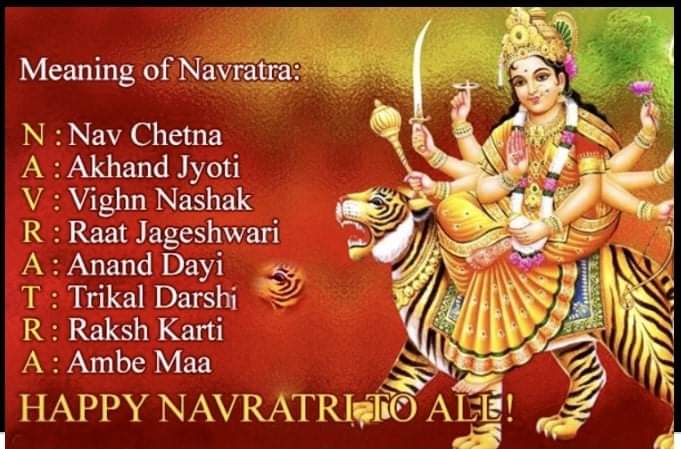
People compare successful modern-era females with Durga. Achiever of material things and ability to multi-task does not mean Durga. Durga symbolizes the victory of good over evil and the restoration of Dharm. If these successful females are achieving things for themselves and not doing anything for society then they should not be compared to Durga.
- Multi-tasking does not translate to ASHTABHUJA
- Material education does not translate to SARASWATI
- Earning for self or family does not make anyone MAHALAKSHMI
- Cooking for family and to survive is not anywhere near to ANNAPURNA
- Determination to make a name for herself and get famous does not make you PARVATI
- Exercising, going out is not DURGA
- Protecting own family and children is not the same as KALIMATA
- Loving mother and balancing family does not make a female MAHA GAURI
- FIghting for her rights is not equivalent to RANACHANDI
Real Fasting of Navaratri in the intellectual level means purification of the atma in the following ways:
Prathama - I will leave all my anger
Dwitiya - I will stop judging people
Tritiya - I will leave all my grudges
Chaturthi - I will forgive myself and everyone
Panchami - I will accept myself and everyone as they are
Shashti - I will love myself and everyone unconditionally
Saptami - I will leave all my feelings of jealousy and guilt
Ashtami (Durga Ashtami) - I will leave all my fears
Navami (Maha Navami) - I will offer gratitude for all the things I have
Dashami (Vijayadashami) - There is abundance in the universe for all and I will always tap the same and create what I want through unconditional love, Sadhana, nishkam sewa, and faith
An interesting aspect, relevant for Navratre festival:
Humans get 50% of their molecular DNA from their mother and the rest 50% comes from their father.
But all humans get their 100% Mitochondrial DNA from their mother.
• Mitochondria and their DNA come from the mother to the baby.
• Mitochondria produce ATP which is the source of energy in our body.
• Thus, we receive our energy/power from our mothers. And our mother gets it from her mother and our father also gets it from his mother.
And is it not very interesting to note that in Hinduism, the goddess of power is mother - Adi Shakti or Maa Shakti, our mother.
• The scientific understanding over the ages and years is very clear.
• Similarly, all Vedic pujas and yagnas and the perfect mantra of Maa Durga work on a su btle level to excite and empower us.
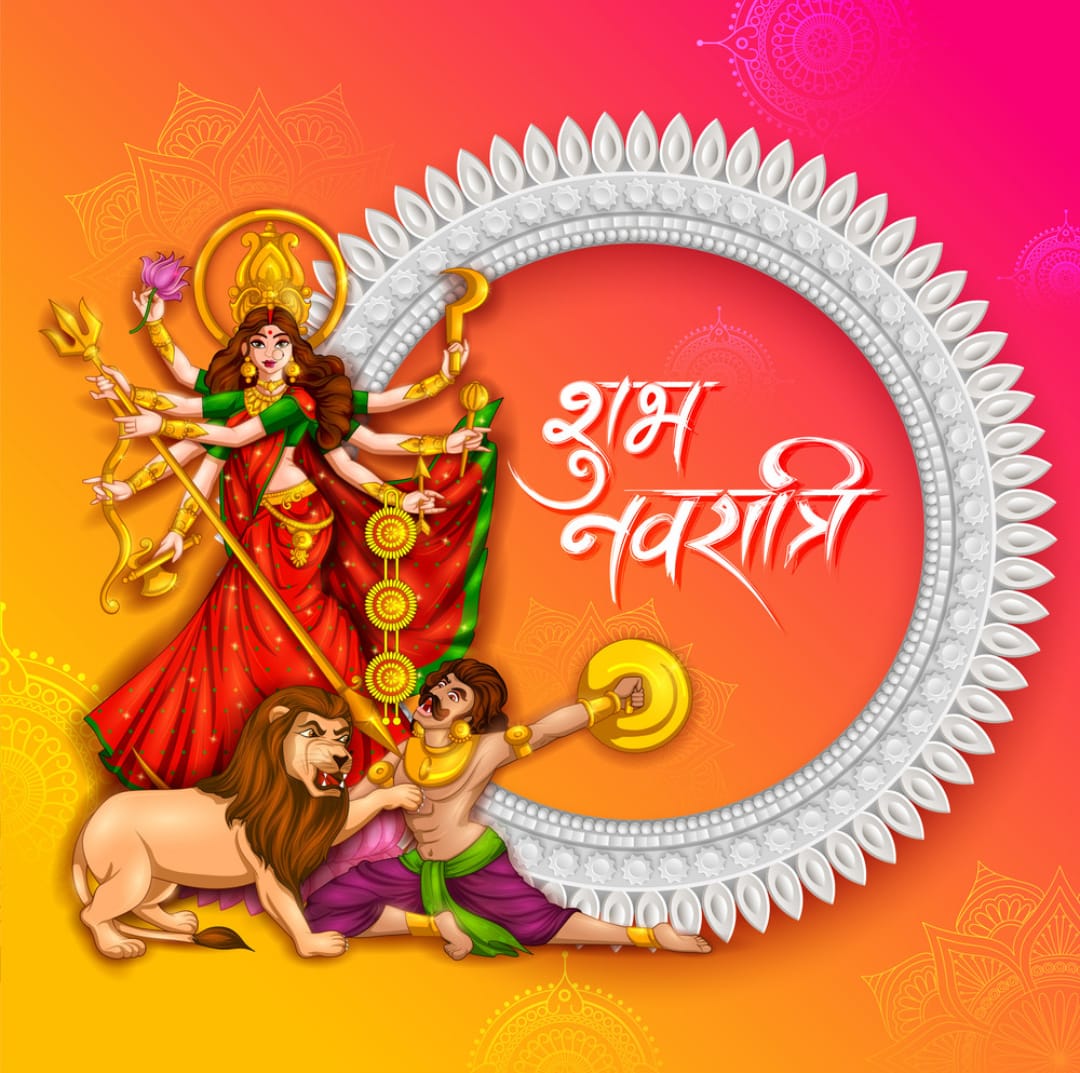
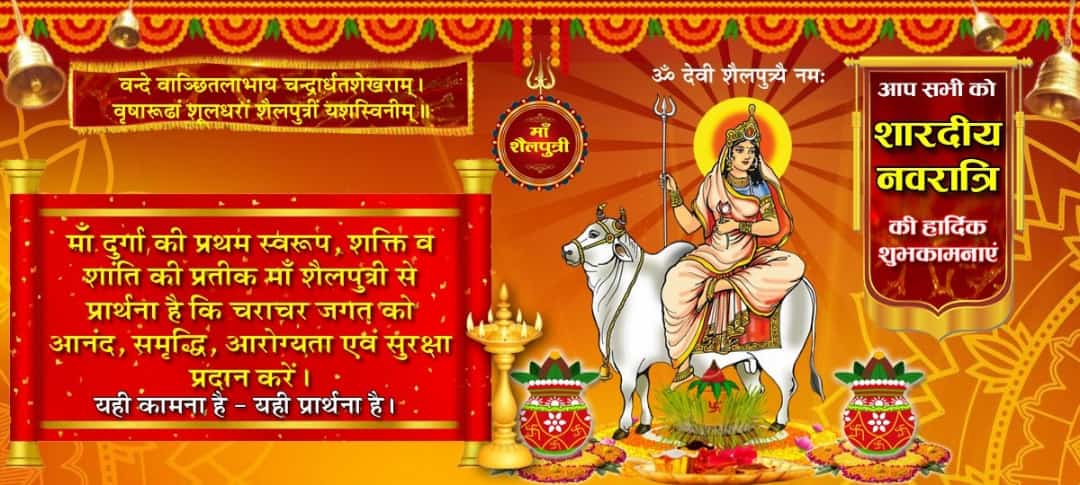
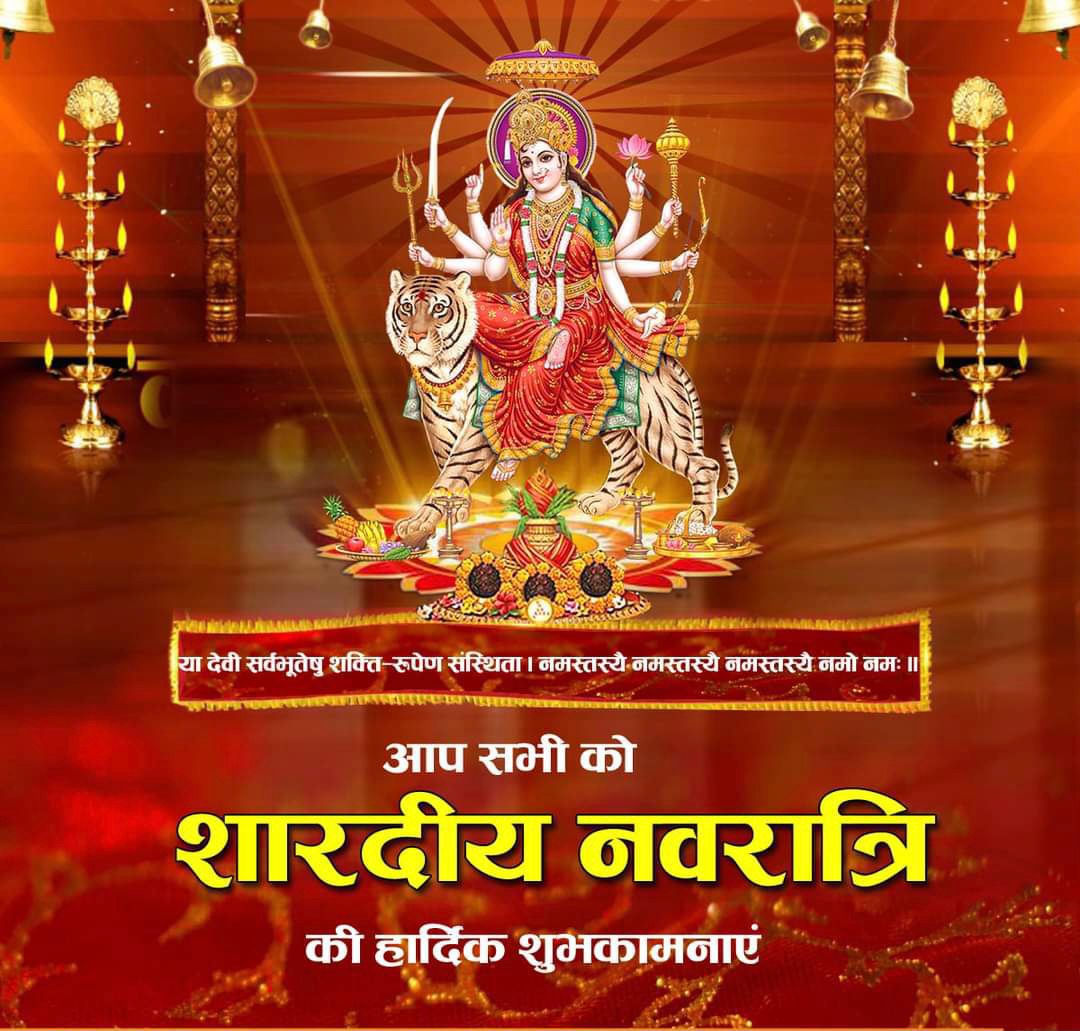
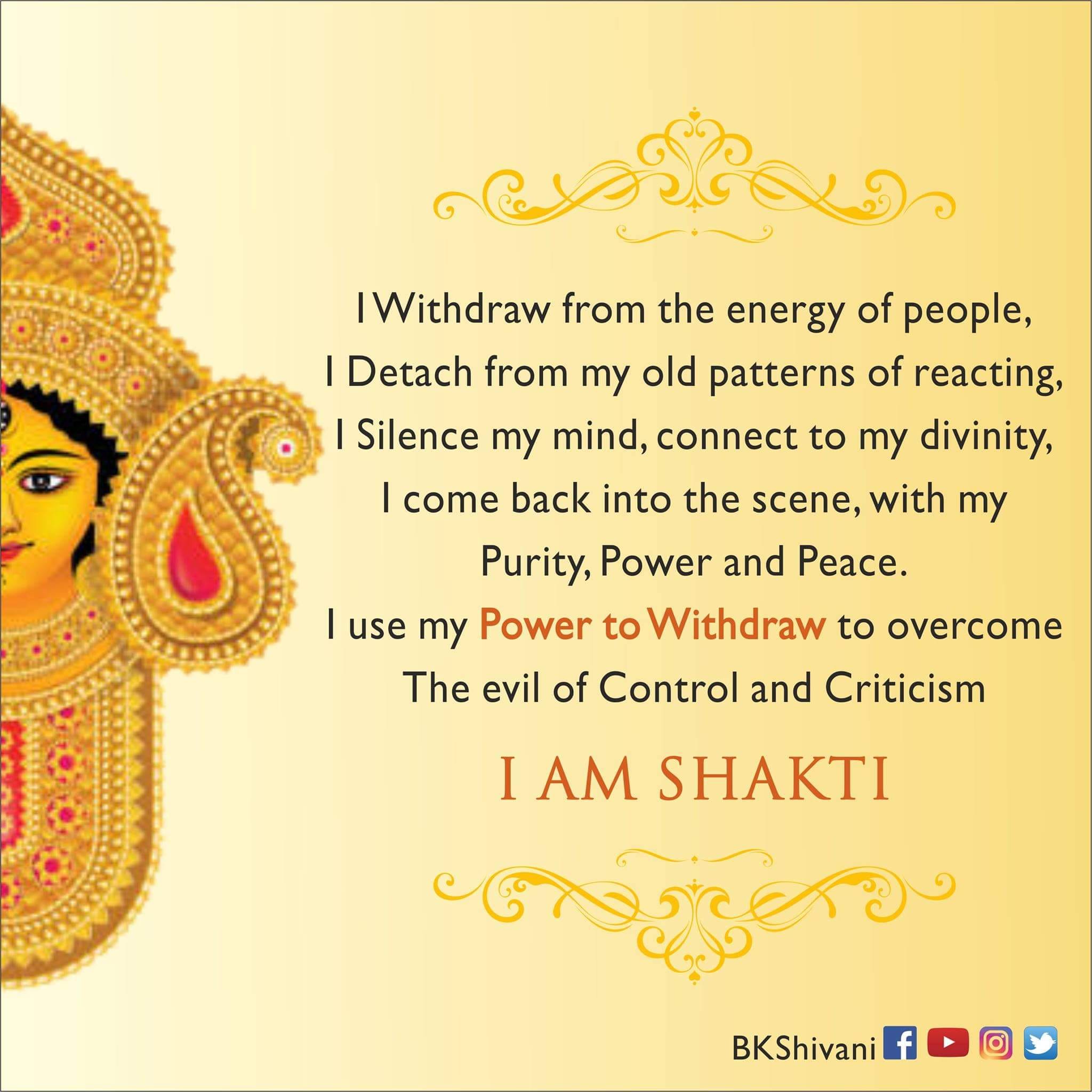
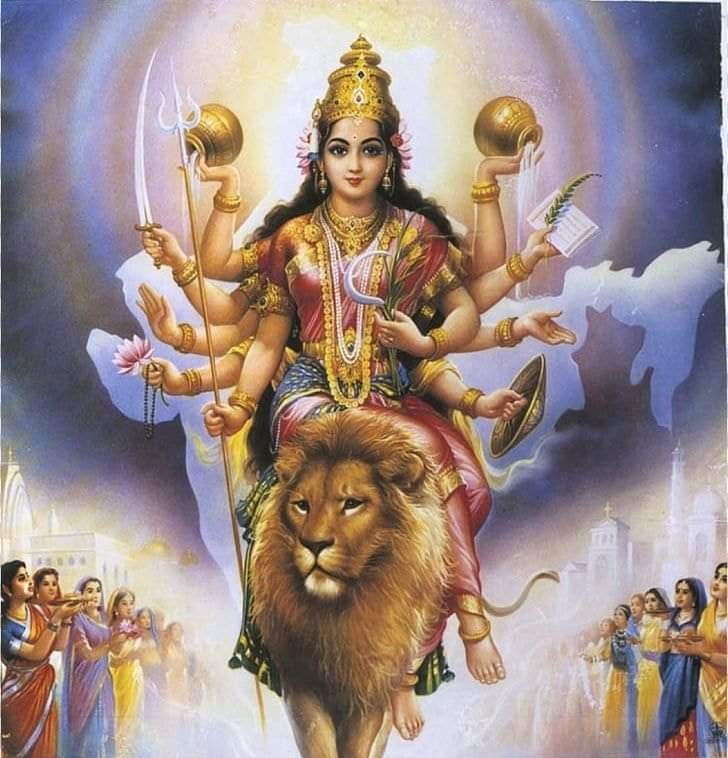
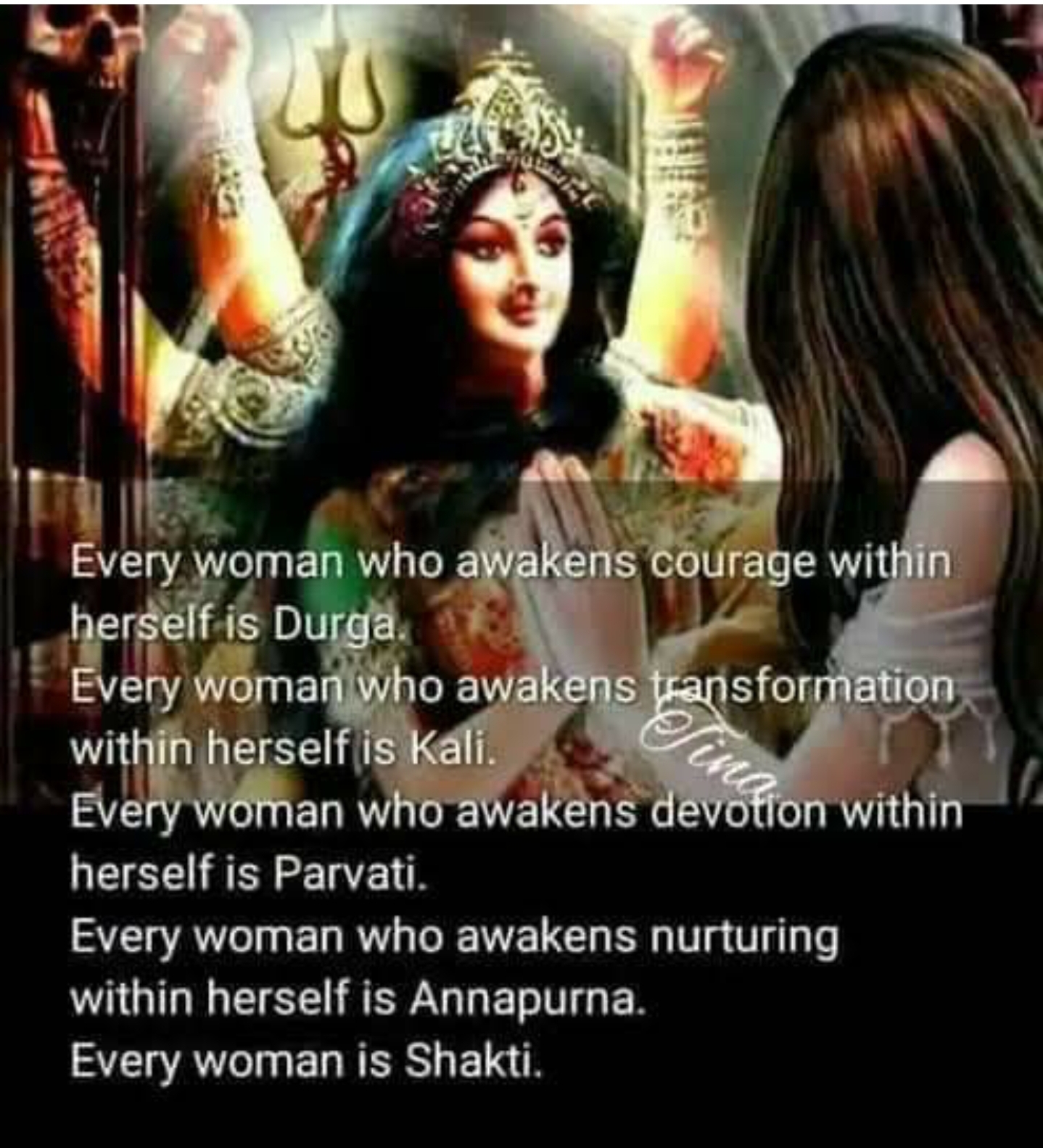
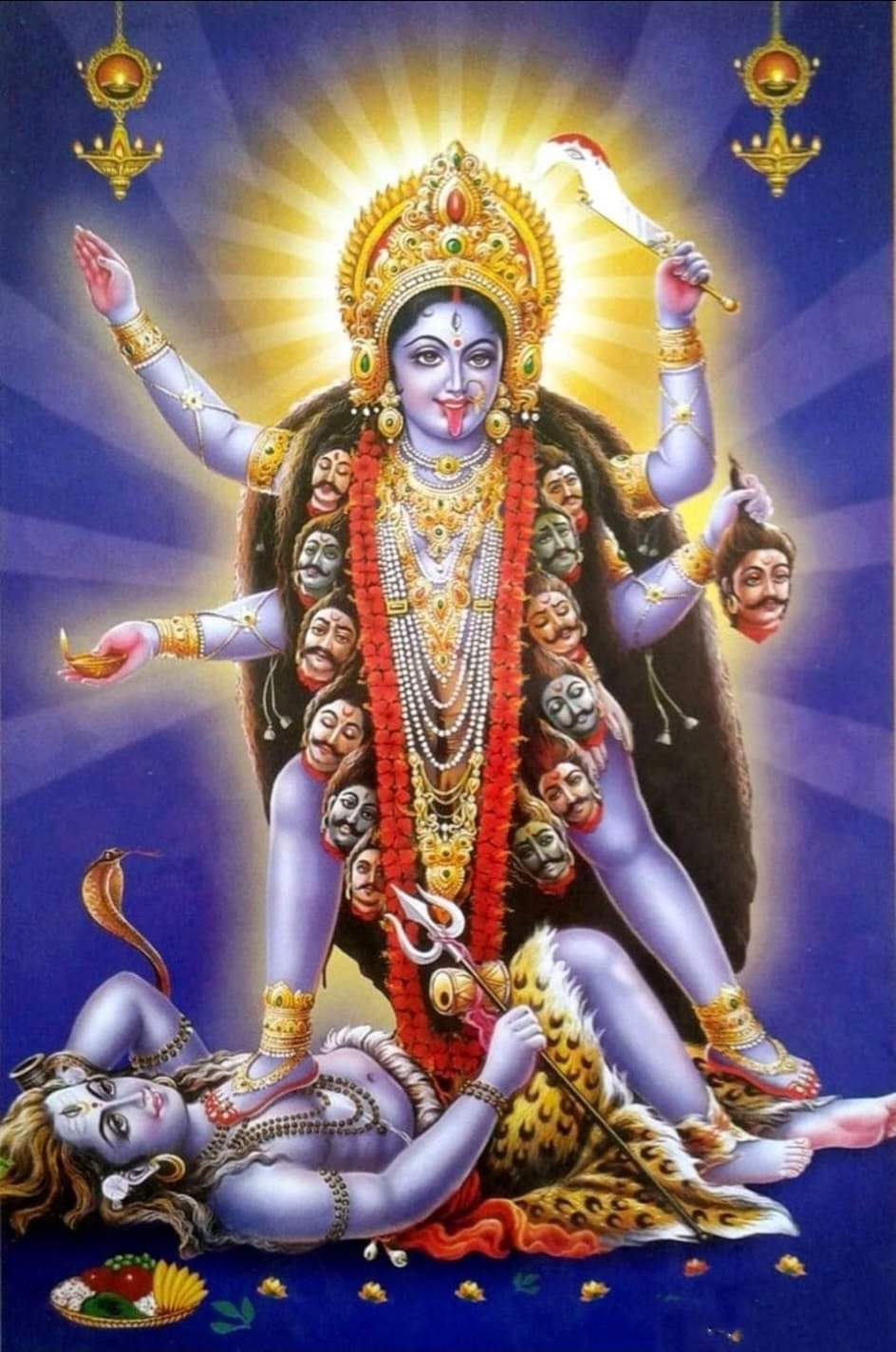
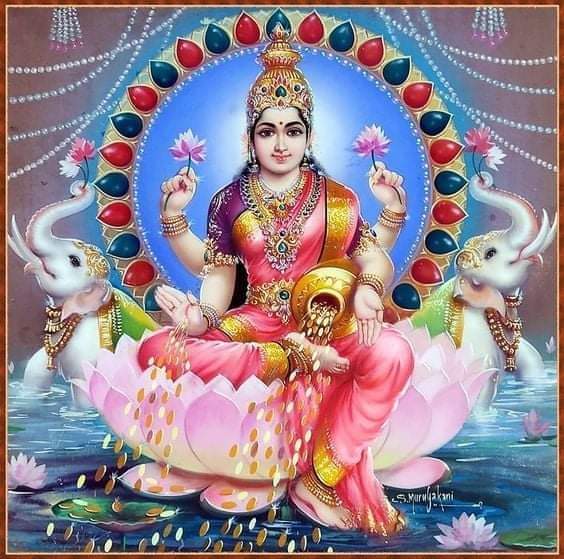
https://bharathgyan.com/mb-navaratri-3/
Ga+Ra+Ba
Ga means Gavu meaning singing in Gujrati/ Gana in Hindi and singing in English
Ra means Ramavu in Gujarati and khelana in Hindi/ play in English
Ba meaning with the mother who is full of divinity, love, energy, power, wisdom, knowledge- Durga Shakti
Let’s play and sing together all with the Mother Divine, the stream of knowledge, music bit resonate in our actions and transform together in the divine journey of life. Learn the steps together, dance is an art, singing, music, rhythm in synchronized manner are an art this is another way of practicing Saraswati Upasana.
The music and Geet/Garaba meaning divine song.
In other words- this is our culture, practice, and tradition.
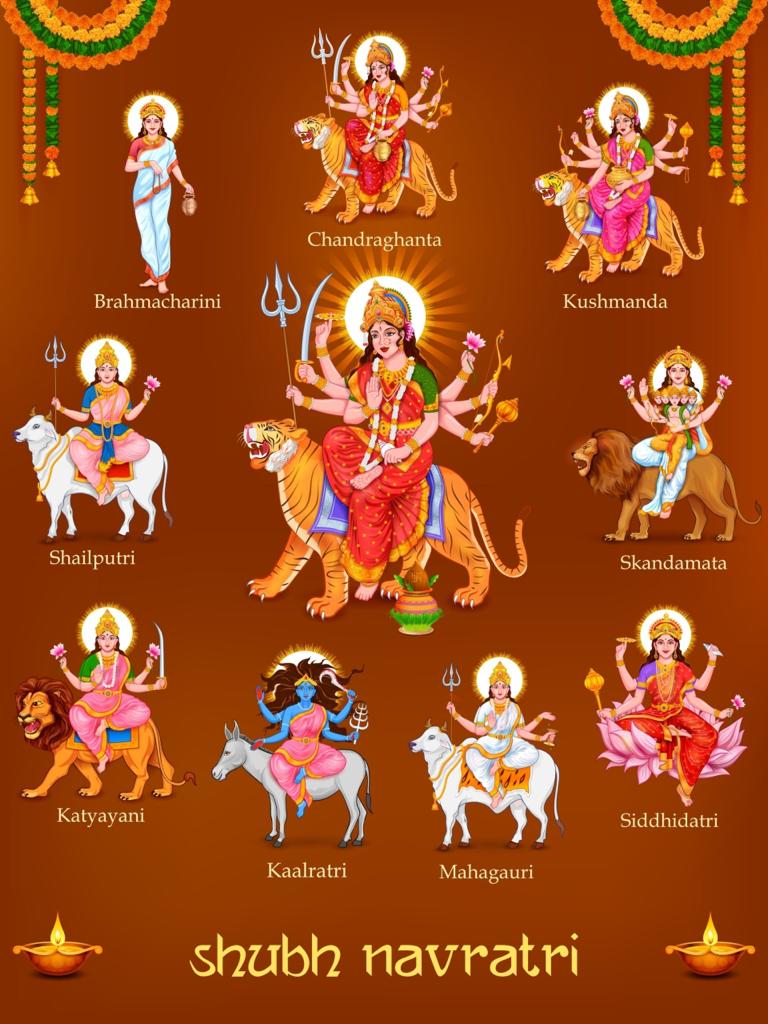
https://www.youtube.com/watch?v=PcqlauWj2_I
Durga stuti
Durga stuti.mp3
दुसह दोष-दुख दलनि, करु देवि दाया ।
विश्वमूलाऽसि जनसानुकूलाऽसि, कर सूलधारिणि महामूलमाया ।।
तड़ित गर्भांग सर्वांग सुंदर लसत, दिव्य पट भव्य भूषण विराजै ।
बालमृग-मंजु खंजन-विलोचनि चंद्रवदनि लखि कोटि रतिमार लाजै ।।
रूप सुख-सील-सीमाऽसि भीमाऽसि रामाऽसि वामाऽसि वर वुद्धिवानी ।
छ्मुख-हेरम्ब-अम्वासि जगदम्बिके शंभु-जायासि जय जय भवानी ।।
चंड-भुजदण्ड-खंडनि बिहंडनि महिष, मुंड-मद-भंगकर अंग तोरे ।
सुंभ निःसुंभ कुम्भीस रन केसरिनि, क्रोध-वारीस अरि-वृंद वोरे ।।
निगम-आगम अगम गुर्वितवगुन कथन, उर्विधर करत जेहि सहस जीहा ।
देहि माँ, मोहि पन प्रेम यह नेम निज, राम घनश्याम तुलसी पपीहा ।।